The SilverStone SX1000 SFX-L 1 kW PSU Review: Big Power for Small Form Factors
by E. Fylladitakis on July 28, 2021 9:00 AM EST- Posted in
- Cases/Cooling/PSUs
- PSUs
- SilverStone
- SFX
- SFX-L
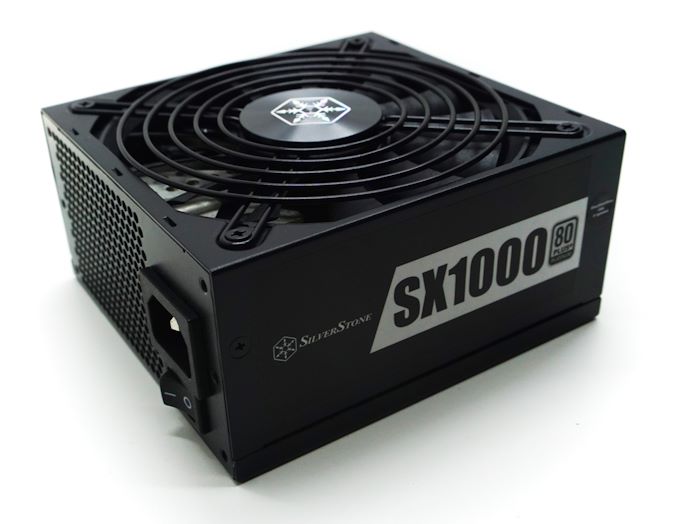
For better or worse, the amount of power required by top tier PC gaming systems has been on the rise over the last few years. Lead in large part by a leap in video card power consumption – gone are the days where a flagship video card would draw just 250 Watts – the required and recommended wattages for high-end systems have started encroaching on the kind of power that dual GPU systems required barely half a decade ago. So although dual GPU configurations themselves have all but died, their high power requirements have been replaced with even more energy-hungry video cards and CPUs.
All the while this has been going on, it's created something of an usual side benefit of dual GPU gaming systems going the way of the dodo: you can get true flagship-level performance in an impressively small system. Small form factor PCs are of course hardly new, but previously there was always some trade-off in the total amount of stuff you could, well, stuff in such a system. A second video card, another 2.5-inch SSD, etc. The death of dual GPU systems has done away with that issue, but now it's created another issue: powering a modern dense, high wattage system.
For a typical ATX system this isn't a problem, as there are myriads of products available and users can easily find very powerful and reliable PSUs at reasonable prices. However, this quickly becomes an issue with small form factor systems, where the availability of high output PSUs is relatively low. And this brings us into the realm of more specialty form factors.
Over the past couple of years, several of the larger PSU manufacturers released compact SFX and SFX-L PSUs that were designed to match the power requirements of powerful gaming systems. With power output ratings reaching 700 Watts or more, some of them could even power flagship-level PC gaming systems. This was quite the feat considering that finding a quality SFX PSU even for a mainstream gaming system was a very difficult task until a few years ago.
But, for some customers, even 700 Watts isn't going to be enough. Especially as you start blending over into the high-end workstation space – think multiple Radeon Pro workstation cards here – even more power is required. So to fill that role SilverStone has rolled out a 1000 Watt SFX-L form factor PSU, the SX1000.
Already well-known for products like their SFX design-pushing SX800-LTI 800W PSU, the company has gone back to the drawing board in an effort do one better. We did not expect that the company would easily manage to squeeze even more power out of an SFX PSU, and yet nearly three years after the release of the SX800, here we are: SilverStone has an SFX-L PSU with the frightening output of 1 kW. This currently is the most powerful SFX-L PSU on the market, so of course we need to take a look at it to see how it stacks up.
| Power specifications ( Rated @ 40 °C ) | |||||
| AC INPUT | 100 - 240 VAC, 50 - 60 Hz | ||||
| RAIL | +3.3V | +5V | +12V | +5Vsb | -12V |
| MAX OUTPUT | 25A | 25A | 83.3A | 3A | 0.3A |
| 125W | 999.6W | 15W | 3.6W | ||
| TOTAL | 1000W | ||||
Packaging and Bundle
SilverStone supplies the SX1000 into a fairly large cardboard box that could easily fit a regular ATX unit in it. The box is very sturdy and we found the PSU sandwiched between thick polystyrene foam pieces inside, providing ample shipping protection. The artwork is relatively simple, with a blue and gold visual theme, and mostly limited to pictures of the unit itself.
Inside the box, we found a fair bundle for a good PSU. Aside from the manual and datasheet, there is a typical AC power cable, a few cable ties, a few plain cable straps, four black thumbscrews, and four black M3.5 mounting screws. Strangely, SilverStone does not supply an SFX-to-ATX adapter with the SX1000. The company used to do so in the past with models that had almost half the power output of the SX1000, making it a noticeable and strange departure, especially as these powerful units are far more likely to find their way into ATX-compliant cases than low-output models.
The SX1000 is a fully modular PSU, meaning that every cable can be detached, including the 24-pin ATX cable. Making the 24-pin ATX cable detachable usually does not make any practical sense, but it does in this case: allowing the user can replace the short 12” ATX cable with a longer version if the PSU is going to be installed inside an ATX case. Without any exception, all of the cables are “flat” type cables, with black wires and black connectors.
| SilverStone SX1000 | ||
| Connector type | Hardwired | Modular |
| ATX 24 Pin | - | 1 |
| EPS 4+4 Pin | - | 2 |
| EPS 8 Pin | - | - |
| PCI-E 6+2 Pin | - | 6 |
| PCI-E 8 Pin | - | - |
| SATA | - | 8 |
| Molex | - | 3 |
| Floppy | - | 1 |
The SilverStone SX1000 1 kW PSU
External Appearance
The SilverStone SX1000 is an SFX-L unit, meaning that it is based on the SFX standard but it is 30 mm deeper. Its chassis measures 125 (W) × 63.5 (H) × 130 (D) mm (4.92 x 2.5 x 5.12 inches), which does limit the compatibility of the PSU, as several SFX-compliant cases do not provide that kind of clearance. Nevertheless, cases meant to hold SFX PSUs and multiple/oversized video cards should all be providing enough clearance for an SFX-L PSU.
SilverStone is not a company that designs visually extravagant products and the SX1000 sticks to that tradition, with the designer sticking to a classic all-black design. The chassis is sprayed with satin black paint but most of its surface is covered by stickers. The stickers on the sides of the unit only display the company and product logos, whereas the sticker that covers the entirety of the unit’s top side hosts the basic electrical specifications and certifications of the unit. At the bottom side of the unit, we can see the black fan and the finger guard, with a metallic crest featuring the company’s logo covering the fan’s engine.
Despite the very cramped space requirements, the designer still managed to fit an on/off switch next to the AC receptacle. The front side of the unit is covered by numerous cable connectors, along with a sticker that hosts a basic legend. All of the cable connectors except those of the ATX cable are covered with plastic protective caps.
Internal Design
A major advantage of the SFX-L form factor is that it allows for 120 mm fans to be installed, a necessity for the cooling requirements of such a powerful unit. Globe supplies the low profile 120 mm fan, which is a double ball bearing model with a maximum speed of 2400 RPM at 12 Volts. This is a strange choice by SilverStone, as the company usually prefers to use sleeve bearing fans because of their lower noise output, even for their top-tier products.
Although the SX1000 externally reminds us of the older SX800-LTI, they are nothing alike internally. The OEM behind the creation of the PSU remains the same with Enhance Electronics, the company behind most of SilverStone’s PSUs. That is where the similarities end though, as the SX1000 is based on a newer, different platform.
The filtering stage of the SX1000 is slightly beefed up, as it begins at the rear of the AC receptacle and continues onto the main PCB, with four Y capacitors, four X capacitors, and two filtering inductors. There are two APFC capacitors, supplied by Rubycon, rated at 400 V / 470 μF each. A large filtering inductor sits right next to them. The heatsinks are rather basic for a PSU with that kind of output, with relatively little mass and surface area. We would not expect to see such heatsinks in ATX units rated above 600 Watts, yet the limited space in the SX1000 requires certain sacrifices. That does not mean that the temperatures of the components should skyrocket but does hint the use of special very low loss parts that will generate minimal amounts of heat – which also are relatively costly.
The primary inversion circuit is a proven with an LLC resonant full-bridge topology. Eight MOSFETs generate the 12 V rail on the secondary side of the unit. The minor rails are being generated via DC-to-DC converters. The strange part here is that the topologies of the SX1000 are a step up compared to the half-bridge topology of the SX800-LTI, yet the unit still failed to receive an 80Plus Titanium efficiency certification. The capacitors on the secondary side are a mix of electrolytic and solid-state products, with most of them supplied by UniCon. There are a couple of small Rubycon electrolytic capacitors in there as well.



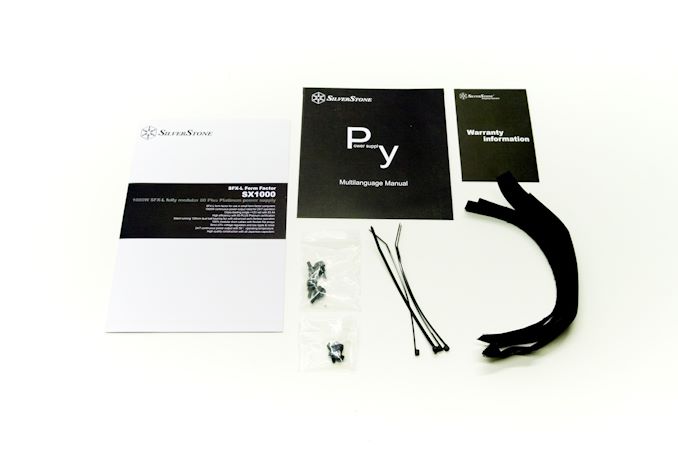
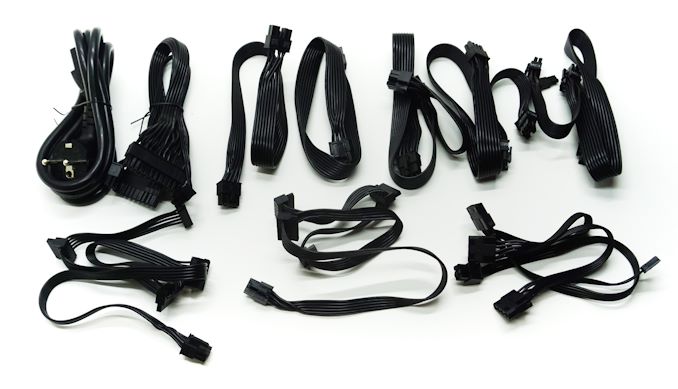
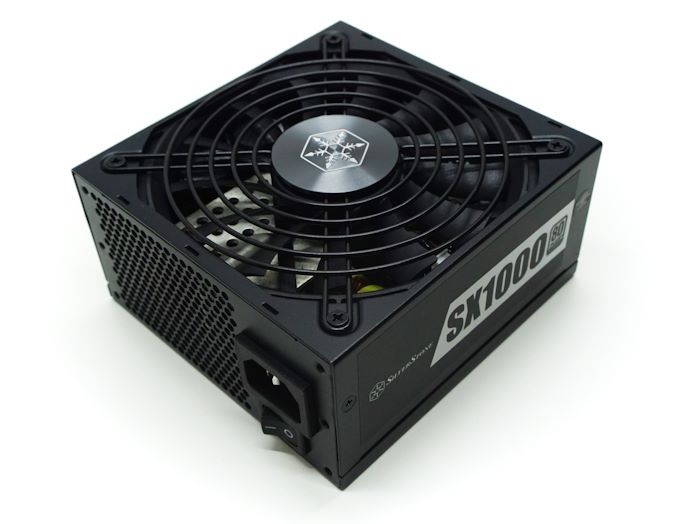

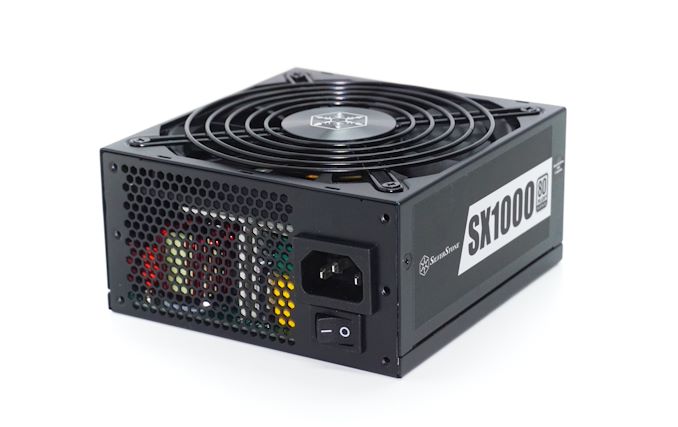
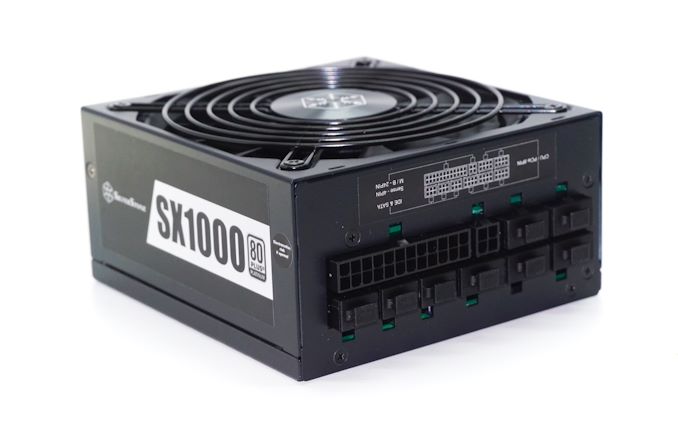
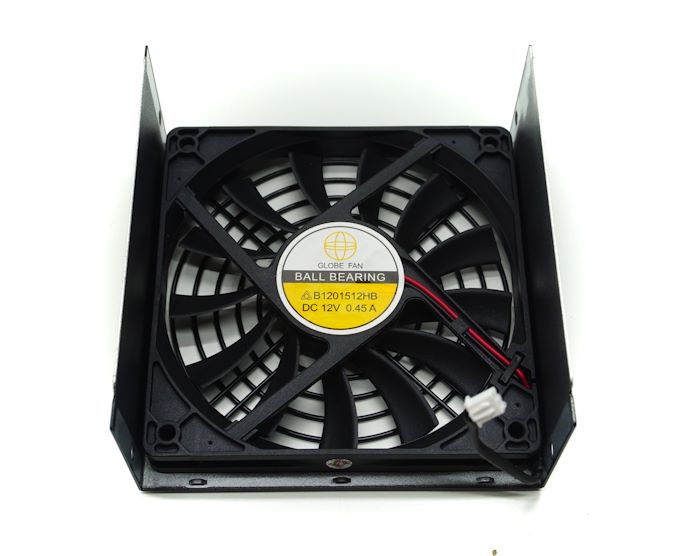
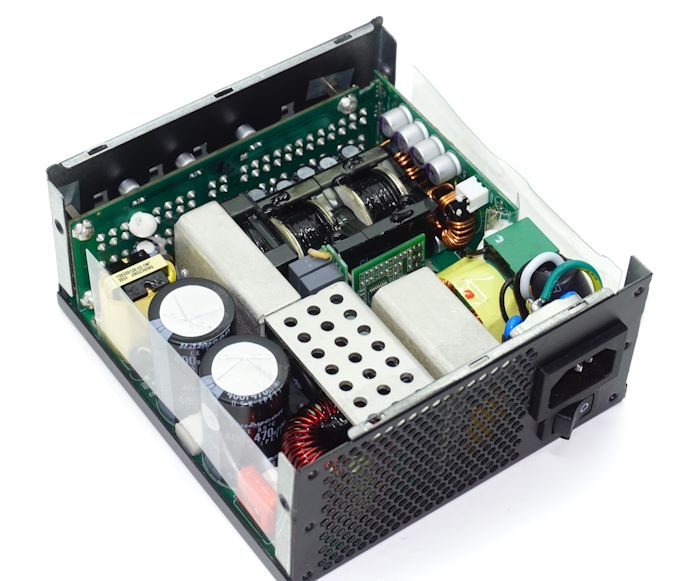

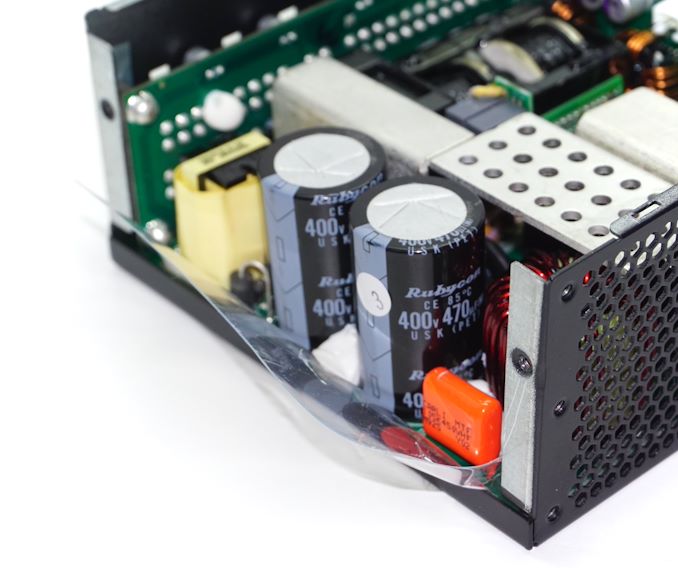

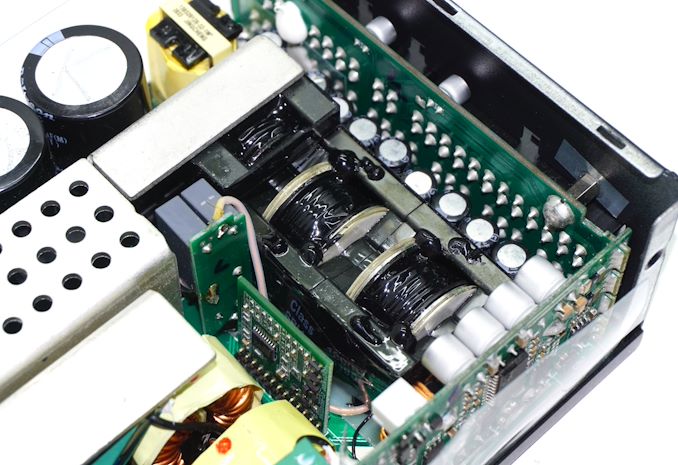








37 Comments
View All Comments
romrunning - Wednesday, July 28, 2021 - link
You can't just generalize that all small form factor PSUs are not worth it. A good PSU is a good PSU, no matter what size. I have a Corsair 750W SFX PSU, and it's perfectly fine and quiet, despite the SFX size. I do not feel I have compromised in any way compared to a full-size ATX 750W, and indeed, I have benefited from the small size in my ITX case. I think all PSUs, large and small, should be judged by their own strengths & weaknesses.Oxford Guy - Wednesday, July 28, 2021 - link
There is a thing called diminishing returns. The laws of physics can’t be broken via wishful thinking.Taking one aspect of design far out causes necessary curtailment(s). If those are something a person can live with (such as a deaf person with a loud PSU) that’s fine but the more niche a design is the less appeal/relevance it will have for the majority.
Three-wheel microcars have their niche but it’s not a very big one, no matter how ‘good’ they are. Don’t try to drive them at high speeds and don’t expect much if there is a collision with a larger vehicle. They’re fine when they ‘stay in their lane’. No one is going to put a V-8 turbodiesel into one.
CheapSushi - Thursday, July 29, 2021 - link
This is NOT diminishing returns. This is so stupid as a comment. There's even smaller form factors. With Gallium Nitrate they get even more efficient. They get quieter because of higher efficiency. More can be titanium and platinum rated. Seasonic even makes a dual twin 700W PSU in an ATX form factor. Stop holding back the norm. People like you would never let the Industry do ANYTHING different.Oxford Guy - Thursday, July 29, 2021 - link
Putting the word 'not' in caps isn't a substantive rebuttal, nor is the rest of your post.Higher efficiency is available in larger form factors. And... the maximum size of the fan decreases as form factors shrink – something this article pointed out. Smaller fans make more noise for the same level of cooling, typically, if two fans are designed equally efficiently. That is why ATX cases no longer commonly ship with 80mm fans.
'Stop holding back the norm. People like you would never let the Industry do ANYTHING different.'
Good ole ad hom... the lubricant of astroturf.
Samus - Thursday, July 29, 2021 - link
What compromise? Not everyone needs a big case to flex their e-peen :)CheapSushi - Thursday, July 29, 2021 - link
What's that got to do with anything? Case size shouldn't be the deciding factor for making SFX and SFX L the norm, the standard. Silverstone and many others are proving you can make high efficiency high watt in a smaller package with zero real loss to anything in quality and performance.Oxford Guy - Thursday, July 29, 2021 - link
Oh my. Well... you managed to respond to a bad comment with one that was even less competent.Oxford Guy - Wednesday, July 28, 2021 - link
‘This is a strange choice by SilverStone, as the company usually prefers to use sleeve bearing fans because of their lower noise output, even for their top-tier products.’Sleeve bearing fans have to be mounted vertically for good longevity, according to everything I’ve read. PSUs are always mounted horizontally.
Sleeve bearings are also, as far as I know, efficient with no/very low restriction scenarios (e.g. ‘case’ ‘airflow’ fans) but create very little static pressure. So, using a sleeve fan inside a PSU hardly seems optimal in that way either. Should designers begin to mount them vertically...
FDB and similar ‘modern’ bearings seem to be optimal from both a cooling-per-decibel point of view (with decent, although not always great, static pressure ability) and also can be mounted horizontally.
Ball bearing fans typically are used for the highest static pressure scenarios, such as mounted to dense radiators. How much less restriction does a PSU like this one have?
meacupla - Thursday, July 29, 2021 - link
The bearing type has little to no factor in determining static pressure or air flow of the fan.Sleeve bearing fans just don't last as long as ball bearings, especially in higher temperatures.
There is a NMB comparison sheet even tells you that sleeve bearings will fail to operate above 70c.
"Sleeve bearing is quieter" is an outdated convention. Well made ball bearings can run as quiet as sleeve bearings, but cost goes up with tighter tolerances.
The reason for most static pressure fans using ball bearings or fluid dynamic bearings, is probably because they already require tighter manufacturing tolerances, and using higher quality bearings doesn't increase the BoM by much.
Where as air flow fans can be made cheaply by skimping on quality and using a sleeve bearing to compensate for the increased noise of poor weight balance.
Oxford Guy - Thursday, July 29, 2021 - link
'The bearing type has little to no factor in determining static pressure or air flow of the fan.'I have never seen a sleeve fan that has strong static pressure but I have seen plenty of dual-bearing ball fans that do. They have little space between the blades and, typically, large motor hubs.
I have read a lot of fan reviews and the review results don't match your claims, nor the claims of Samus. I have also purchased a good number of fans and have looked at what's on offer at retail and online. These magical sleeve-bearing static pressure fans are like unicorns.